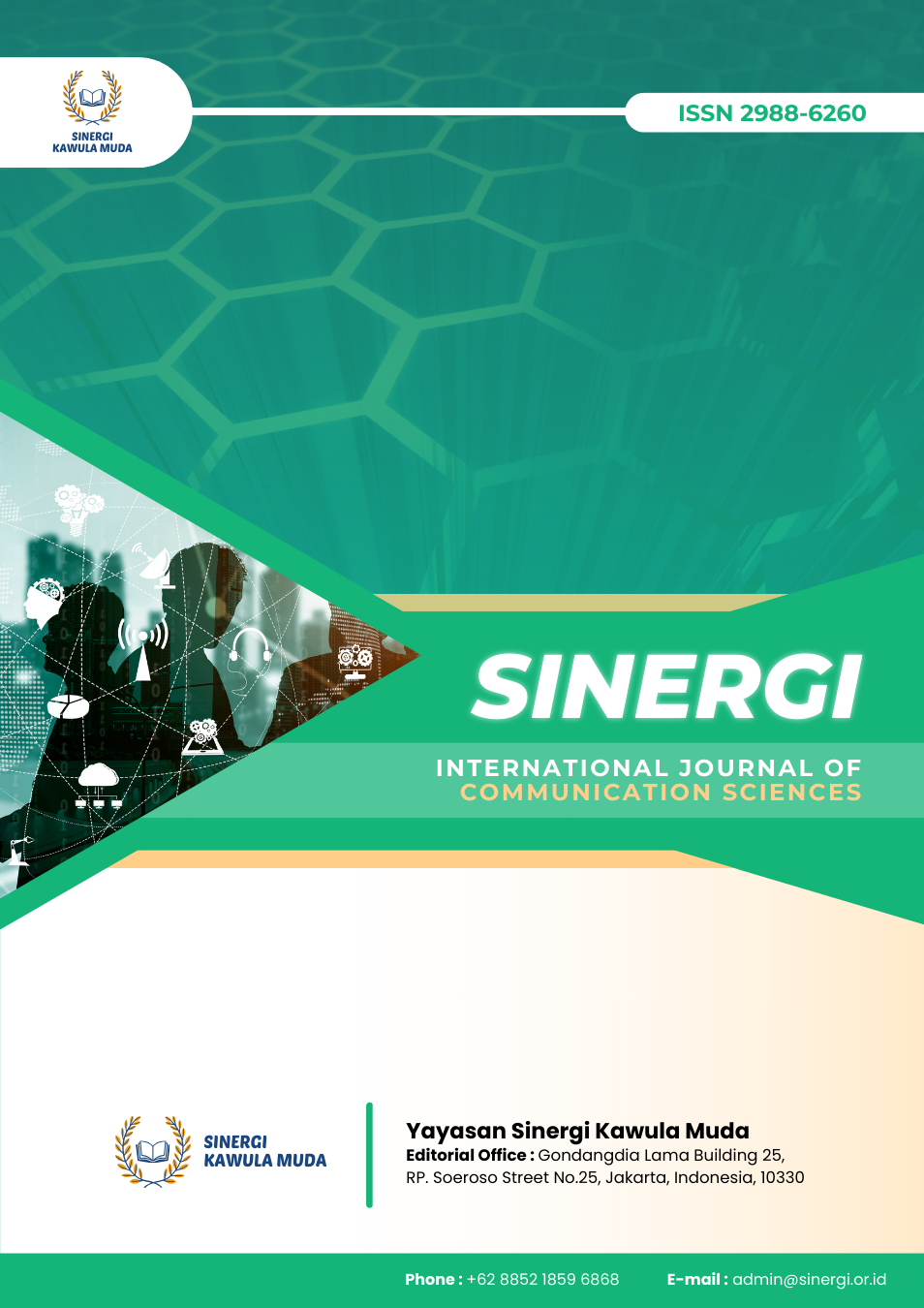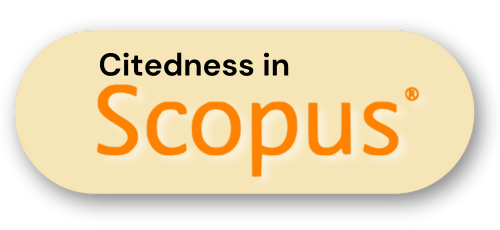The Influence of TikTok Social Media on Adolescent Social Behavior in the Digital Era: A Case Study in Kendari City
DOI:
https://doi.org/10.61194/ijcs.v3i2.757Keywords:
TikTok, Adolescent Social Behavior, Algorithmic Conformity, Social Media Psychology, Peer Interaction, Self Perception, Digital LiteracyAbstract
This study examines the role of TikTok in shaping the social behavior and self perception of adolescents in Kendari City, Indonesia. Situated within an interpretivist paradigm, a qualitative descriptive case study was conducted involving 120 adolescents aged 15–18 years. Data collection employed participatory observation, baseline questionnaires, and semi structured interviews, analyzed through thematic coding and matrix displays. The findings reveal that TikTok usage fosters both positive and negative psychosocial outcomes. While 42% of respondents reported increased self confidence through creative engagement, 32% experienced social pressure to conform to trending challenges, and 12% reported negative social comparisons. Algorithmic recommendation systems were found to significantly influence content exposure and behavioral normalization, aligning with the emerging "algorithmic conformity" model. Peer interactions were enhanced through trend discussions and collaborative video creation; however, relational distancing was also observed. Content consumption was overwhelmingly entertainment driven, reinforcing homogenized digital cultures. This study contributes to the expanding literature on adolescent digital socialization by emphasizing the hybrid influence of peer dynamics and algorithmic architectures. The findings advocate for integrated digital literacy, emotional regulation, and platform transparency initiatives to promote healthier digital ecosystems for adolescents.
References
Alamyar, I. H., & Khotimah, K. (2023). The Impact of TikTok on Body Image: A Narrative Review of the Literature. Jkomdis Jurnal Ilmu Komunikasi Dan Media Sosial, 3(3), 764–773. https://doi.org/10.47233/jkomdis.v3i3.1265 DOI: https://doi.org/10.47233/jkomdis.v3i3.1265
Angelini, F., Gini, G., Marino, C., & Eijnden, R. J. J. M. van den. (2024). Social Media Features, Perceived Group Norms, and Adolescents’ Active Social Media Use Matter for Perceived Friendship Quality. Frontiers in Psychology, 15. https://doi.org/10.3389/fpsyg.2024.1222907 DOI: https://doi.org/10.3389/fpsyg.2024.1222907
Angelini, F., Marino, C., & Gini, G. (2022). Friendship Quality in Adolescence: The Role of Social Media Features, Online Social Support and E-Motions. Current Psychology, 42(30), 26016–26032. https://doi.org/10.1007/s12144-022-03564-3 DOI: https://doi.org/10.1007/s12144-022-03564-3
Apriva, R., & Nurnisaa. (2025). Developing Self-Potential for Introvert Teenagers Through TikTok Creative Content. Ijlcb, 3(1), 18–23. https://doi.org/10.46336/ijlcb.v3i1.198 DOI: https://doi.org/10.46336/ijlcb.v3i1.198
Bossen, C. B., & Kottász, R. (2020). Uses and Gratifications Sought by Pre-Adolescent and Adolescent TikTok Consumers. Young Consumers Insight and Ideas for Responsible Marketers, 21(4), 463–478. https://doi.org/10.1108/yc-07-2020-1186 DOI: https://doi.org/10.1108/YC-07-2020-1186
Cai, Y. (2023). The Influence of TikTok on the Establishment of Adolescent Self-Esteem. BCP Education & Psychology, 8, 107–111. https://doi.org/10.54691/bcpep.v8i.4292 DOI: https://doi.org/10.54691/bcpep.v8i.4292
Cervi, L., Tejedor, S., & Marín, C. (2021). TikTok and the New Language of Political Communication. Cultura Lenguaje Y Representación, 26, 267–287. https://doi.org/10.6035/clr.5817 DOI: https://doi.org/10.6035/clr.5817
Cheng, X., & Peng, G. (2024). Study on the Behavioral Motives of Algorithmic Avoidance in Intelligent Recommendation Systems. Journal of Global Information Management, 32(1), 1–22. https://doi.org/10.4018/jgim.352857 DOI: https://doi.org/10.4018/JGIM.352857
Dir, A. L., Saldana, L., Chapman, J. E., & Aalsma, M. C. (2018). Burnout and Mental Health Stigma Among Juvenile Probation Officers: The Moderating Effect of Participatory Atmosphere. Administration and Policy in Mental Health and Mental Health Services Research, 46(2), 167–174. https://doi.org/10.1007/s10488-018-0902-x DOI: https://doi.org/10.1007/s10488-018-0902-x
Dondzilo, L., Rodgers, R. F., & Dietel, F. A. (2023). Association Between Engagement With Appearance and Eating Related TikTok Content and Eating Disorder Symptoms via Recommended Content and Appearance Comparisons. International Journal of Eating Disorders, 57(2), 458–462. https://doi.org/10.1002/eat.24117 DOI: https://doi.org/10.1002/eat.24117
Fortunato, L., Coco, G. L., Teti, A., Bonfanti, R. C., & Salerno, L. (2023). Time Spent on Mobile Apps Matters: A Latent Class Analysis of Patterns of Smartphone Use Among Adolescents. International Journal of Environmental Research and Public Health, 20(15), 6439. https://doi.org/10.3390/ijerph20156439 DOI: https://doi.org/10.3390/ijerph20156439
Gabarrón, E., Reichenpfader, D., & Denecke, K. (2023). Exploring the Evolution of Social Media in Mental Health Interventions: A Mapping Review. Yearbook of Medical Informatics, 32(01), 152–157. https://doi.org/10.1055/s-0043-1768730 DOI: https://doi.org/10.1055/s-0043-1768730
Halldorsson, B., Hill, C., Waite, P., Partridge, K., Freeman, D., & Creswell, C. (2021). Annual Research Review: Immersive Virtual Reality and Digital Applied Gaming Interventions for the Treatment of Mental Health Problems in Children and Young People: The Need for Rigorous Treatment Development and Clinical Evaluation. Journal of Child Psychology and Psychiatry, 62(5), 584–605. https://doi.org/10.1111/jcpp.13400 DOI: https://doi.org/10.1111/jcpp.13400
Hamilton, J. L., Torous, J., Szlyk, H. S., Biernesser, C., Kruzan, K. P., Jensen, M., Reyes‐Portillo, J. A., Primack, B. A., Zelazny, J., & Weigle, P. E. (2024). Leveraging Digital Media to Promote Youth Mental Health: Flipping the Script on Social Media-Related Risk. Current Treatment Options in Psychiatry, 11(2), 67–75. https://doi.org/10.1007/s40501-024-00315-y DOI: https://doi.org/10.1007/s40501-024-00315-y
Huang, S.-C., Silalahi, A. D. K., & Eunike, I. J. (2024). Exploration of Moderated, Mediated, and Configurational Outcomes of Tourism-Related Content (TRC) on TikTok in Predicting Enjoyment and Behavioral Intentions. Human Behavior and Emerging Technologies, 2024, 1–29. https://doi.org/10.1155/2024/2764759 DOI: https://doi.org/10.1155/2024/2764759
LUSIANA, V. (2024). Hubungan Social Comparison Dengan Self-Esteem Pada Remaja Pengguna Tik Tok. Knowledge Jurnal Inovasi Hasil Penelitian Dan Pengembangan, 3(4), 435–445. https://doi.org/10.51878/knowledge.v3i4.2705 DOI: https://doi.org/10.51878/knowledge.v3i4.2705
Lv, X., Chen, Y., & Guo, W. (2022). Adolescents’ Algorithmic Resistance to Short Video APP’s Recommendation: The Dual Mediating Role of Resistance Willingness and Resistance Intention. Frontiers in Psychology, 13. https://doi.org/10.3389/fpsyg.2022.859597 DOI: https://doi.org/10.3389/fpsyg.2022.859597
Mambile, C., & Ishengoma, F. (2024). Exploring the Non-Linear Trajectories of Technology Adoption in the Digital Age. Technological Sustainability, 3(4), 428–448. https://doi.org/10.1108/techs-11-2023-0050 DOI: https://doi.org/10.1108/TECHS-11-2023-0050
Montag, C., Yang, H., & Elhai, J. D. (2021). On the Psychology of TikTok Use: A First Glimpse From Empirical Findings. Frontiers in Public Health, 9. https://doi.org/10.3389/fpubh.2021.641673 DOI: https://doi.org/10.3389/fpubh.2021.641673
Nesi, J., Choukas‐Bradley, S., & Prinstein, M. J. (2018). Transformation of Adolescent Peer Relations in the Social Media Context: Part 1—A Theoretical Framework and Application to Dyadic Peer Relationships. Clinical Child and Family Psychology Review, 21(3), 267–294. https://doi.org/10.1007/s10567-018-0261-x DOI: https://doi.org/10.1007/s10567-018-0261-x
Ooge, J., Dereu, L., & Verbert, K. (2023). Steering Recommendations and Visualising Its Impact: Effects on Adolescents’ Trust in E-Learning Platforms. 156–170. https://doi.org/10.1145/3581641.3584046 DOI: https://doi.org/10.1145/3581641.3584046
Petrovic, S. (2022). From Karaoke to Lip-Syncing: Performance Communities and TikTok Use in Japan. Media International Australia, 186(1), 11–28. https://doi.org/10.1177/1329878x221106565 DOI: https://doi.org/10.1177/1329878X221106565
Purnama, D. H., Ernalida, & Arianti, Y. (2024). Construction and Deconstruction of Self-Identity of Palembang Adolescents on Instagram. Revista De Gestão Social E Ambiental, 18(8), e05295. https://doi.org/10.24857/rgsa.v18n8-114 DOI: https://doi.org/10.24857/rgsa.v18n8-114
Rahmalia, M. N., & Laili, L. (2025). Intensity of Using TikTok Social Media as a Mediator of Self-Esteem and Body Image in Adolescents. Jurnal Ilmiah Psikologi Terapan, 13(1), 54–60. https://doi.org/10.22219/jipt.v13i1.36002 DOI: https://doi.org/10.22219/jipt.v13i1.36002
Sanger, E. (2020). Social Networking in Mental Health Interventions for Adolescents. Perspectives in Public Health, 142(5), 261–262. https://doi.org/10.1177/1757913920924431 DOI: https://doi.org/10.1177/1757913920924431
Sari, D. P., & Sa’id, M. (2023). For Your Page TikTok: The Influence of Self-Esteem on Online Self-Presentation in Teenagers. Jurnal Sains Psikologi, 12(2), 274. https://doi.org/10.17977/um023v12i22023p274-283 DOI: https://doi.org/10.17977/um023v12i22023p274-283
West, M., Rice, S., & Vella‐Brodrick, D. (2024). Adolescent Social Media Use Through a Self-Determination Theory Lens: A Systematic Scoping Review. International Journal of Environmental Research and Public Health, 21(7), 862. https://doi.org/10.3390/ijerph21070862 DOI: https://doi.org/10.3390/ijerph21070862
Zhang, Q. (2025). The Interplay of Technology, Family, and Identity: Chinese Adolescents’ Self-Presentation on Douyin. Frontiers in Psychology, 16. https://doi.org/10.3389/fpsyg.2025.1544224 DOI: https://doi.org/10.3389/fpsyg.2025.1544224
Zhu, J., Ma, Y., Xia, G., Salle, S. M., Huáng, H., & Sannusi, S. N. (2024). Self-Perception Evolution Among University Student TikTok Users: Evidence From China. Frontiers in Psychology, 14. https://doi.org/10.3389/fpsyg.2023.1217014 DOI: https://doi.org/10.3389/fpsyg.2023.1217014
Downloads
Published
Issue
Section
License
Copyright (c) 2025 Dyah Fitria Kartika Sari

This work is licensed under a Creative Commons Attribution 4.0 International License.





